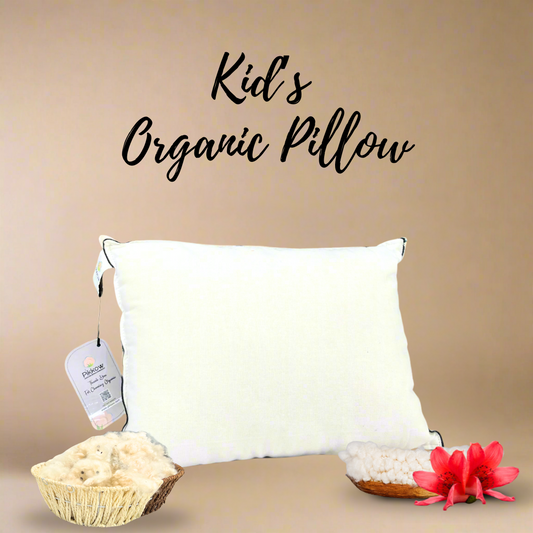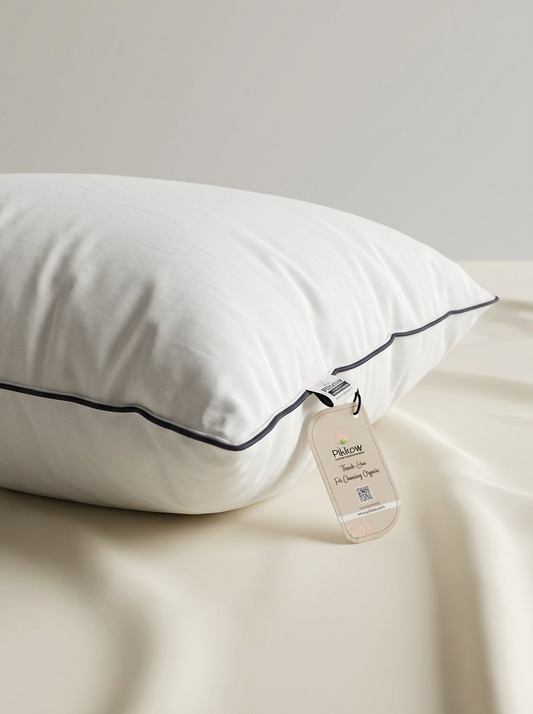From Rainforest Tree to Your Luxurious Pillow
Imagine snuggling into a soft, fluffy pillow at night, unaware of the fascinating journey it's filling has taken. This luxurious comfort might just be filled with kapok, a natural fiber harvested from the majestic kapok tree.
The kapok tree, also known as the Ceiba pentandra, is a towering giant native to tropical rainforests around the world. It reaches impressive heights, with some specimens exceeding 200 feet! During the dry season, the tree produces large, woody seed pods that split open, revealing a treasure trove of fluffy fibers. These fibers, known as kapok, are the key ingredient in our luxurious pillows.
Kapok fibers are unique in their lightness, resilience, and breathability. They are naturally hypoallergenic and resistant to dust mites, making them ideal for allergy sufferers. The harvesting process is meticulous, as the fibers are carefully hand-picked from the pods to ensure their quality. Once collected, the kapok fibers are then cleaned, processed, and carded into a soft, fluffy filling.
This filing is what makes kapok tree pillow filling so special. It provides unparalleled comfort and support, cradling your head and neck gently throughout the night. Moreover, kapok's natural breathability helps regulate your body temperature, ensuring a cool and comfortable sleep.
So, the next time you rest your head on a kapok filled pillow, take a moment to appreciate the incredible journey it has taken. From the towering heights of the rainforest to your cozy bedroom, kapok brings a touch of nature's wonder to your sleep sanctuary.

About Kapok Tree
Explore the grandeur of Kapok trees, scientifically known as Ceiba pentandra. These tropical marvels, belonging to the Malvaceae family (formerly Bombacaceae), are renowned for their majestic presence in the lush tropical forests. Standing tall, Kapok trees are among the loftiest, reaching impressive heights of up to 70 meters. The trunks, flat, cylindrical, and smooth, boast a distinctive gray color and can achieve a diameter of 3 meters.
Adorned with young trunks and branches featuring thick, conical spines, Kapok trees showcase their unique green hue attributed to photosynthetic pigments. Amidst this vibrant foliage, the flowers of Kapok trees emerge, displaying hues ranging from white and pinkish-white to red, with skin-like textures. Immerse yourself in the enchanting world of Kapok trees, giants of the tropical canopy, adding a touch of natural splendor to their surroundings.
Sustainable and Eco-Friendly Choice
Not only is kapok luxurious and comfortable, but it is also an eco-friendly choice. The kapok tree is fast-growing and requires minimal resources to cultivate. Additionally, the harvesting process is sustainable, as the fibers are hand-picked and no harmful chemicals are used. By choosing a kapok tree pillow filling, you are supporting sustainable practices and contributing to a healthier planet.
Indulge in the Luxury of Nature
If you are looking for a pillow that provides exceptional comfort, support, and breathability, look no further than kapok tree pillow filling. This natural fiber offers a unique sleep experience that is both luxurious and sustainable. So, indulge in the comfort of nature and experience the incredible journey of kapok, from the rainforest to your pillow.
How Kapok Fibers are Prepared
The potential of kapok tree pillow filling involves a meticulous process to ensure the highest quality for mattresses, pillows, bolsters, and more. In our local cotton processing company, located in the scenic Village Karaban Pati, Central Java, the journey begins with sorting kapok logs. Only fully dried kapok, characterized by brown, wrinkled fruit skin and protruding fibers, is selected for processing. The readiness of kapok is assessed in the dry state on the kapok tree, ensuring optimal harvesting conditions.
Upon arrival at the cotton processing plant, the logs undergo sorting to distinguish between completely dry and slightly wet cottonwood logs, possibly affected by rainwater during transportation. Undried logs are exposed to sunlight until fully dry. Subsequent to sorting, the peeling process commences, manually separating cotton fibers from the bark of the logs. The peeled kapok is then sun-dried for 3-5 hours, employing frequent stirring and reversing for uniform drying.
The next crucial step involves separating cotton fibers from seeds, referred to as 'klentheng.' Utilizing a 12 HP diesel-powered engine, the separation is achieved by sucking dry cotton through a funnel with a vacuum machine, and a grille fan churns to separate cotton seeds. The separated seeds undergo multiple sifting stages, with a final blower machine ensuring the complete separation and distribution of cotton seeds to designated areas. Precision in milling is paramount to produce high-quality cotton fiber without compromising its structural integrity.
Embrace the excellence of kapok tree pillow filling as each stage in the meticulous processing journey contributes to creating a superior and sustainable bedding choice. Discover the craftsmanship behind kapok-filled products and elevate your sleep experience with the natural comfort of kapok tree pillow filling
Role of Amazon Rainforest tree In the journey of kapok
The journey of kapok is incomplete without acknowledging the crucial role of the Amazon rainforest kapok tree. As one of the richest ecosystems on Earth, the Amazon is home to vast populations of kapok trees, where they thrive in the humid, biodiverse climate. When it comes to choosing natural pillow material, kapok fiber stands out for its softness, sustainability, and hypoallergenic properties. But not all kapok are created equal. In fact, kapok fiber harvested from the Amazon rainforest is widely considered the finest in the world – and for good reason. In the heart of the Amazon, kapok tree cultivation occurs naturally, with minimal human interference.
The sustainable harvesting of kapok fibers in this region ensures that the trees remain undamaged while providing this precious resource. Local communities often depend on the kapok harvest for income, making it both an ecological and economic asset.
Without the contribution of the Amazon rainforest kapok tree, the global supply of this luxurious, eco-friendly fiber would fall short. It’s the untouched beauty and abundance of the Amazon that truly completes the journey of kapok—from rainforest canopy to your cozy, luxurious pillow.
A Pure and Pristine Origin
The Amazon rainforest kapok tree grows in one of the most unspoiled ecosystems on Earth. This untouched environment allows the kapok trees to flourish naturally, free from harmful chemicals or aggressive farming practices. The purity of this environment directly affects the quality of kapok fiber, making it softer, cleaner, and more breathable than kapok sourced from industrial plantations.
Superior Comfort and Performance
Thanks to its high altitude growth and nutrient-rich soil, kapok from the Amazon boasts a finer, silkier texture compared to other sources. When used in pillow filling, it offers:
-
Enhanced breathability
-
Better moisture resistance
-
Long-lasting loft without clumping
- Exceptional support for head and neck
All of this translates to a cooler, more comfortable sleep experience – naturally.
The Bottom Line
When it comes to comfort, quality, and conscience, Amazon rainforest kapok tree is truly unmatched. It’s a piece of nature’s best, lovingly brought from the heart of the rainforest to your home. If you're looking for the best kapok fiber for pillows, look no further than the lush green depths of the Amazon.
Countries which Produces Kapok
renowned for its unparalleled lightness and buoyancy, harvested from the seed pods of the kapok tree (Ceiba pentandra). Thriving in tropical and subtropical climates, kapok production is a global phenomenon, with key players in various regions:
Southeast Asia:
Indonesia:
Leading the global market, Indonesia, especially on Java Island, is a significant contributor to kapok cultivation.
Thailand:
A major player, Thailand significantly influences the world's kapok supply.
Philippines, Vietnam, Malaysia:
These nations actively cultivate kapok trees, contributing to regional production.
South America:
Brazil:
Dominating South American production, Brazil holds a prominent position in the kapok industry.
Peru, Ecuador, Colombia:
With suitable climates, these countries actively contribute to South American kapok production.
Other Regions:
India, Sri Lanka:
South Asian nations like India and Sri Lanka engage in kapok cultivation.
Africa:
While not major producers, countries like Nigeria, Ghana, and Madagascar have a presence of kapok trees.
Central America and the Caribbean:
Mexico, Guatemala, and select Caribbean islands engage in smaller-scale kapok production.
Despite facing competition from synthetic fibers, kapok remains valued for its unique attributes. Though its production has seen a decline in recent years, it continues to be an important product in certain regions. Embrace the natural comfort with kapok tree pillow filling, a sustainable choice inspired by the rich heritage of kapok cultivation.
Conclusion
In conclusion, the fascinating journey of kapok, from tree to your pillow, unveils a story of natural excellence and sustainable comfort. Harvested from the seed pods of the kapok tree (Ceiba pentandra), this unique fiber boasts unparalleled lightness and buoyancy, making it an ideal choice for pillow filling. Thriving in tropical and subtropical climates, kapok production spans across Southeast Asia, South America, Africa, and other regions.
As we trace the kapok processing stages, from meticulous harvesting to the separation of fibers and their baling, it becomes evident that the craftsmanship behind kapok tree pillow filling is a testament to quality and eco-conscious living. Indonesia, Thailand, Brazil, and various other nations contribute significantly to global kapok cultivation, ensuring a steady supply of this natural bedding material.
Though facing challenges from synthetic alternatives, kapok remains valued for its distinctive properties. Its decline in recent years does not diminish its importance, especially in regions like Southeast Asia and South America, where the tradition of kapok tree pillow filling endures. As you embrace the journey of kapok, consider the natural comfort it brings to your sleep sanctuary – a harmonious blend of sustainability, tradition, and the remarkable properties of kapok fibers.
If You are Looking for a 100% pure and Natural Kapok pillow visit Pikkow.com for the best quality and genuine Kapok Pillows.










